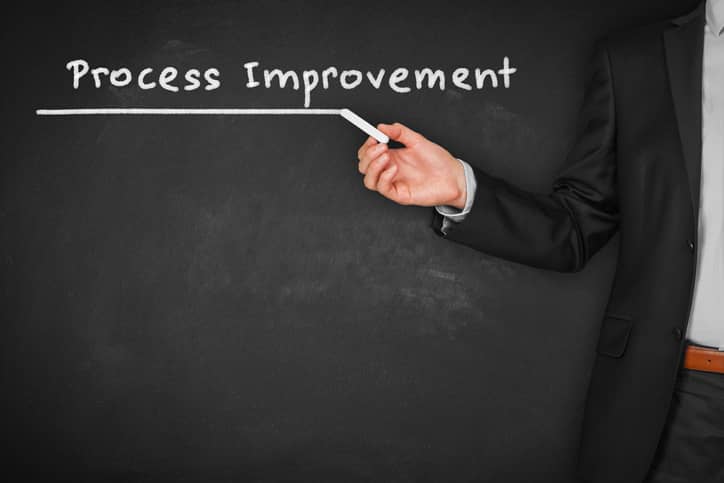Tools of the Six Sigma Improve Phase of DMAIC

Last Updated March 8, 2024
Six Sigma provides proven tools to help organizations analyze and improve their current operations by reducing variation and eliminating defects. The methodology used in Six Sigma is DMAIC, which stands for Define, Measure, Analyze, Improve and Control.
DMAIC gives project teams a five–phase process to follow to make improvements on existing operations. DMAIC is an acronym that stands for the following.
- Define – Define the problem that needs solving
- Measure – Assess the extent of the issue and quantify it with data
- Analyze – Use a data-driven approach to find the root cause of the problem
- Improve – Put changes into place that eliminate the root cause
- Control – Maintain the gains you’ve made with the changes
Six Sigma offers tools within each phase that help teams achieve milestones that keep a project on track for success. In the Define phase, a project charter is created, customer needs are defined, and the process is mapped. In the Measure phase, process performance indicators are identified, a data collection plan is created, and the process baseline performance is measured. In the Analyze phase, potential root causes are identified, they are narrowed, and critical root causes are selected.
The next step is the Improve phase, where teams begin to put solutions into place based on the data measured and analyzed in the previous steps.
Tollgates for the Improve Stage
Tollgates mark the path to success for each phase of DMAIC. Villanova University’s Six Sigma Green Belt course teaches students about the tollgates for each phase, including the following three steps for the Improve phase.
- Generate possible solutions – This involves reviewing all the analysis from the previous phase on critical root causes and devising a solution for each. Teams should create more than one option for each root cause.
- Select solutions – At this point, the project reaches its major goal, which is selecting solutions to fix the problem defined at the beginning of the project. Teams should select data-driven solutions based on what is important to the customers, the company, and the project.
- Implement solutions – The solutions for each critical root cause are put into place.
As taught in the Lean Six Sigma Black Belt course, the Improve phase involves generating data-driven solutions. Teams should base their choices on data to eliminate any assumptions. Black Belts learn to select solutions based on criteria developed by the business, the feasibility of the solution and the ease of implementation.
Improve Phase Tools
Tools and techniques that can be useful in the Improve phase include the following:
Failure Mode and Effects Analysis
Failure Mode and Effects Analysis (FMEA), first used by the military in the 1940s, calls for teams to identify all the ways a process can fail. In the case of most businesses, attention is especially paid to errors or defects that impact the customer. It helps in finding defects in a process that may have previously not been considered. It can help teams manage risk when considering solutions during the Improve phase.
Stakeholder Analysis
As the team approaches the point where they share their solutions with the organization, they must prepare themselves for resistance to some solutions from managers and employees. Getting buy-in is as important to success as any technical part of the process. During Stakeholder Analysis, the team ranks individual stakeholders in terms of their attitude and position toward change. It provides a quick overview of who they need to spend the most time with educating them on the importance and benefits of making data-driven changes.
Kaizen Event
A Kaizen Event is an effective way of quickly implementing the best solutions. Stakeholders and experts come together for a finite amount of time to focus only on picking the right solutions from the options found by the project team. Generally, these events last three to five days.
Poka-Yoke
As solutions are put into place, mistake proofing measures – known as Poka-Yoke – can either prevent a mistake from happening or detect a mistake as soon as it happens. This allows for changes to be made before an error causes more serious damage.
Students in Villanova’s Certificate in Lean Six Sigma program dive deeper into the DMAIC process and how to best apply Six Sigma tools in each phase. As with all things Six Sigma, it’s important to know all the tools available to better select the right one for your unique situation.




